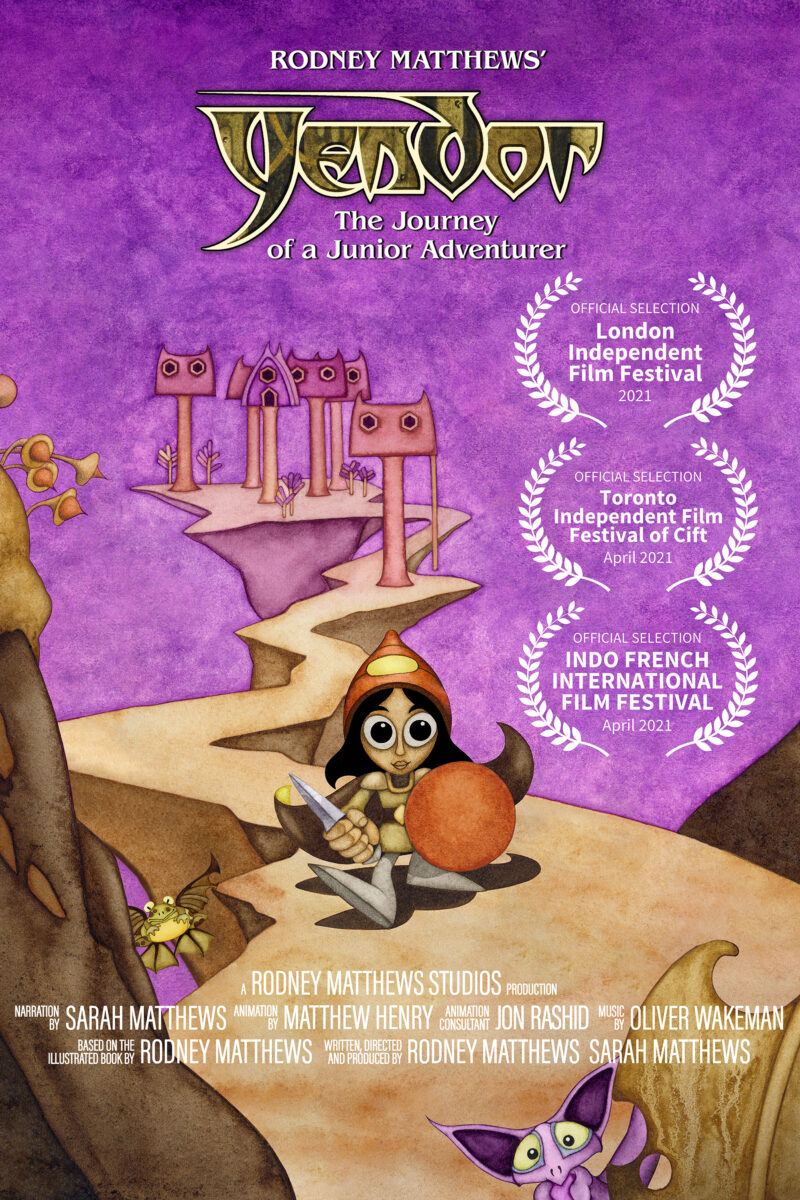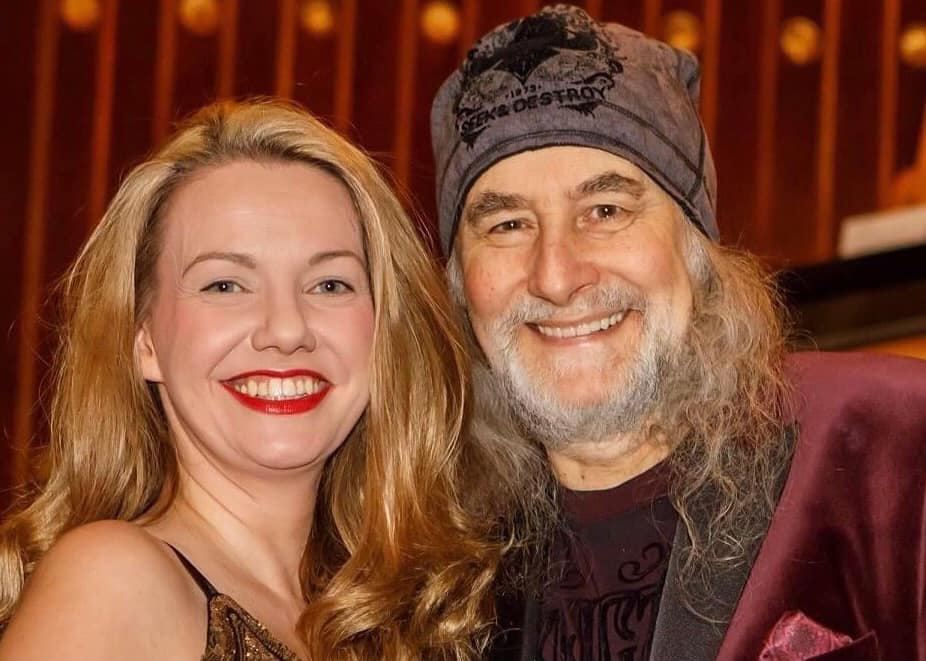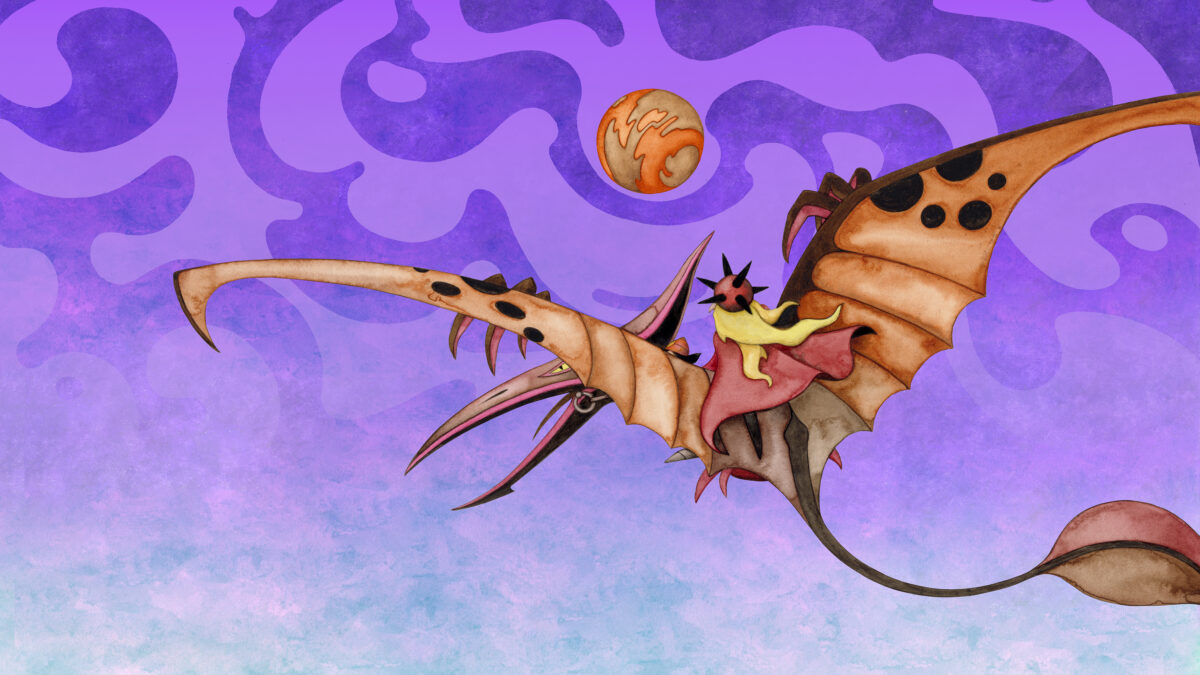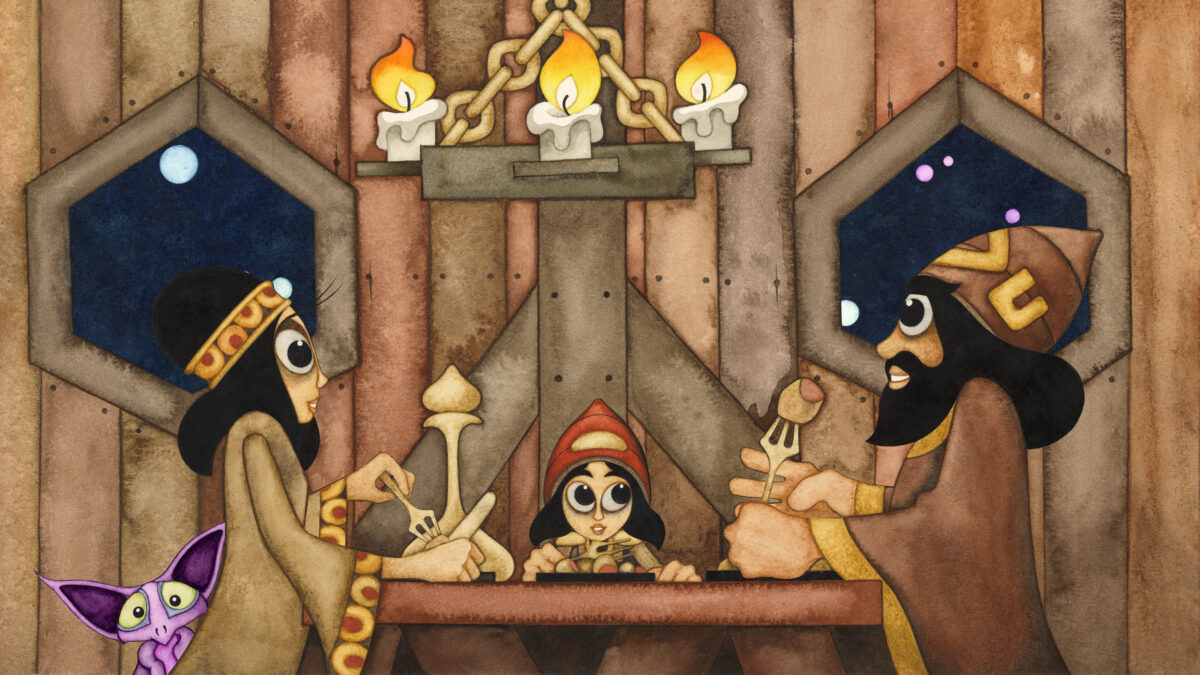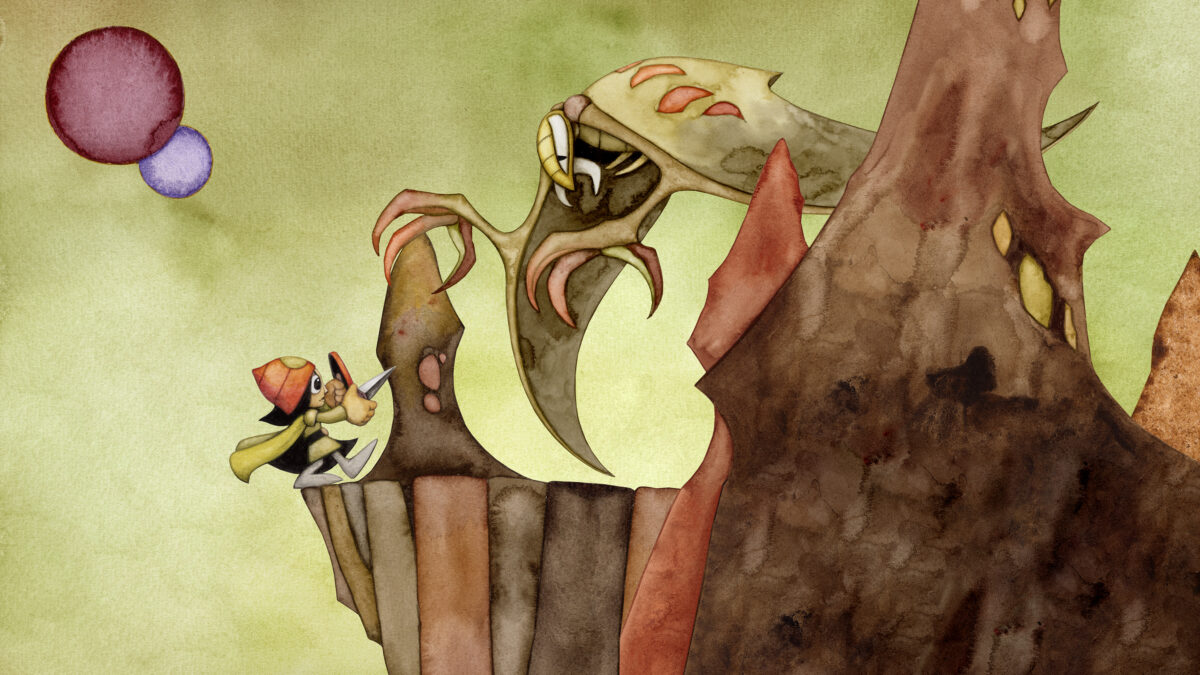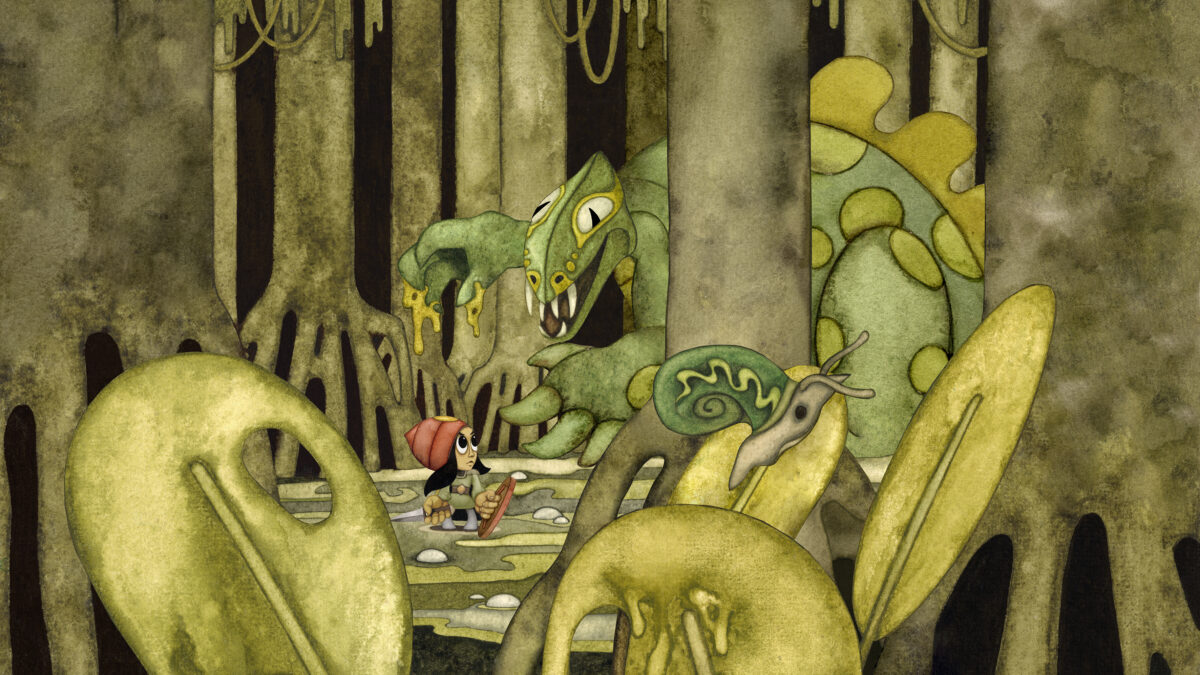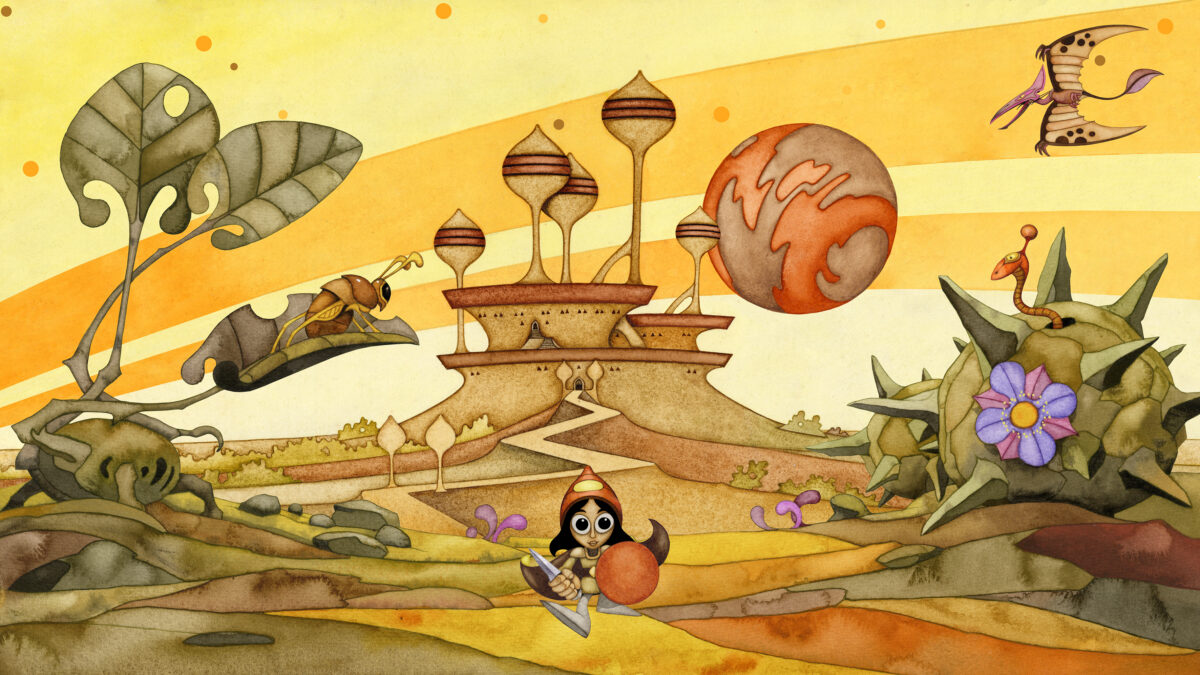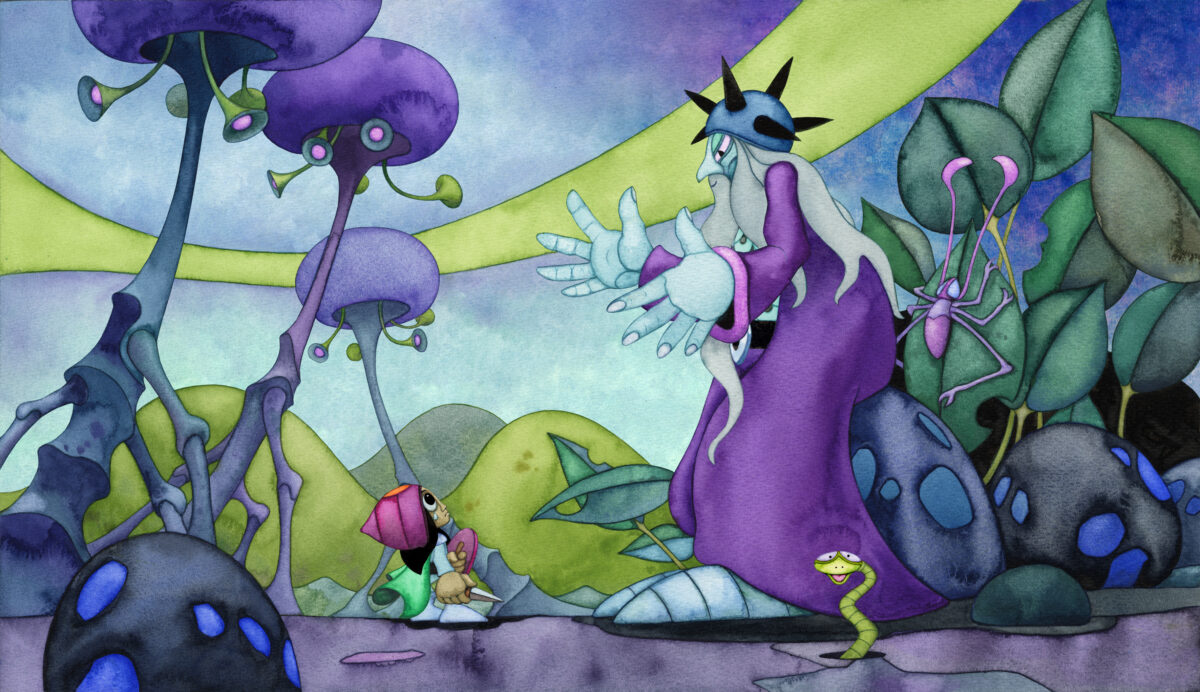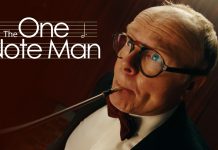The London Independent Film Festival 2021 wrapped recently with an incredible line-up of quality features and short films from some of the most exciting independent film-makers working today.
One of the key shorts that has attracted attention is YENDOR, adapted from a 1970s book by husband and wife team Rodney and Sarah Matthews into an incredibly colourful and rich short animated film.
Click on the link below to watch the trailer:
Film And TV Now was delighted to interview the couple about their short and the development and eventual production of the film.
FILM AND TV NOW: The short is based on a book. Tell us about the original concept in the book and what was the catalyst to turn it into an animated short?
RODNEY MATTHEWS: YENDOR has a long history. Much of the artwork you see in the short was painted in watercolours back in 1973, in-between my regular work, which included rock album art.
The illustrations, and my loose plot which was put to words by a musician friend of mine, were published as a children’s book in 1978 by Big O, the international publishing company that commissioned my fantasy poster art at the time.
Despite many requests the opportunity to reprint never arose until early last year, when Sarah (my wife and business partner) and I decided to do it ourselves.
SARAH MATTHEWS: Things moved very quickly. Within a couple of months we had an edited and republished book that we were very happy with.
We thought it would be fun to complement the book with an audio version and so I went into the studio and recorded my narration – it was done the day before the first lockdown; my first recording and I was still suffering the after effects of recent pneumonia!
We took the recording to our friend Oliver Wakeman (Yes keyboardist and composer), who came up with an amazing original score to run alongside it.
RM: Once we had all those elements in place, it seemed obvious to me that the next natural step was an animation, which is where my heart lies.
FTVN: The pallet of colours is very rich and contrasting throughout. What were your artistic and filmic influences when conceiving the short?
RM: In the immediate sense the illustrations were done at a time when psychedelia was fashionable with all its facets – band album art, concert light shows, tie-dye t-shirts and so on – there was a lot of colour about.
In the professional sense, I had learnt lessons from an early stage in my career from the likes of Walt Disney who knew how to create mood with colour and invariably used a frame or series of frames with particular colour dominance to substantiate a mood.
SM: It was also important for us to keep the integrity of the watercolour illustrations, which would have been lost in 3D. We wanted a traditional style of animation that reflected the retro artwork, something that harked back to my childhood TV programmes, like King Rollo and Mr Benn.
FTVN: How long did it take to adapt the book into a screenplay and what changes were made from the source material?
SM: Covid restrictions prevented us from making some of the changes that we would have liked to have made, for example scripting out and re-recording the voice-over, so we decided to work with what we had on that front.
RM: More artwork had to be produced – quite a bit more – extra scenes and characters from different angles.
FTVN: Tell us about the process of raising money for the short and what challenges and resistance did you encounter in this period of development?
SM: We ran a Kickstarter campaign.
We knew that if it was to be successful, then we would have to find a way of letting people into our imagination. We decided that the only way to do this, was to actually make the first few minutes of animation. We believe in our project whole-heartedly and so put up the money ourselves to do so.
Thankfully, it worked, we made Yendor come “alive “and people really got behind the pint-sized adventurer. They believed in him and us. As a result, we got the funding and he got to go on his adventure!
FTVN: How long did it take to complete?
SM: From the point that we received the funding, it took around 5 months.
Although it felt longer – we spent every minute of every day on it. Our team is very small. Rodney produced so much new artwork. I worked on preparatory cut-outs. Then our animator, Matt Henry, got to work with what was provided and came back to us, sometimes weekly, sometimes fortnightly with the results.
Jon Rashid’s expertise was also called upon. He enjoyed the project so much that he sat in all the meetings for free. This whole process continued through Skype meetings until the job was done.
FTVN: Do you see this as a potential feature length film?
RM: That would be nice if done from scratch.
FTVN: Do you have other source material you would like to adapt into a film of some kind?
RM: I have such a lot of ideas waiting in the wings.
At the moment though, we have a second YENDOR short in mind, which will have the advantage of being specifically scripted – Yendor will step up a notch and find himself at the controls of a small flying machine on another planet.
Also, we are currently at work on another IP, which will hopefully be an animation – short or series – titled ‘Oddney’s Otherland: Chronicles from Beneath the Shed’.
FTVN: Do you see yourself doing more live-action narrative work or are you happy to remain in the animation arena?
RM: Remain in animation!
SM: Definitely.
FTVN: The film taps into that imaginative childhood sense of wonder, both for the character and for people who have read the book. How has the book been received since its’ original publication?
RM: We’ve sold books across the world, there are no barriers. It is a pleasure to say that the feedback has been great, everyone who has read the book has loved it. I think the story resonates, particularly in these times when we are all stuck at home and dream of getting out in the world again.
We’ve noticed that young kids have really got behind the story. It seems to give them permission to use their imagination, to dream and better still to dream big. Also adults, who are familiar with Rodney’s work from the album covers of rock bands such as Asia, Magnum, Nazareth and Rick Wakeman, have a real fondness for it.
FTVN: What issues and themes would you like to explore in your future work?
RM: We are insistent that our films will contain no ulterior motives, such as political or religious lessons. Our aim is to provide wholesome, honest adventure suitable for children of all cultures and races. Put simply, we are “adventure for the love of it!”
FTVN: How has the current situation affected your development and evolution as a film-maker?
RM: In many ways it has worked in our favour. We have been given complete peace to hide ourselves away, feverishly working without interruptions.
FTVN: Finally, what are you most proud of about this short animation film?
RM: I am proud of the Kickstarter backers who believed in us, on this our first animated endeavour, and of the nominations we have received from festivals. However, the real booster comes from the feedback from those kids who have watched it and gone nuts about it!
SM: As Rodney says, we are so grateful to everyone who has supported us, encouraged us, worked with us and valued us to make this happen. What makes me proud is hearing from parents that their kids are now starting to make up their own Yendor adventures. It is wonderful to think that we can inspire such young imaginations.
For more on the London Independent Film Festival, please go to:
Film And TV Now was honoured to review all the features on show in the Festival and has also interviewed some other short film-makers alongside Rodney and Sarah Matthews.
We are proud to promote independent film-makers of all kinds and we champion talent of all backgrounds through our website.
Please get in touch and let us know what you thought of the Festival if you saw any of the films on show.


